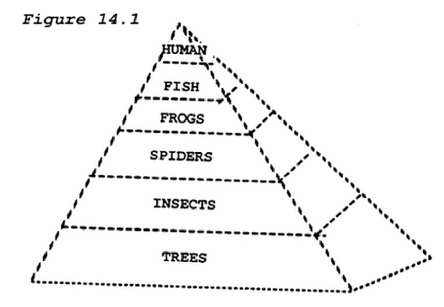The spiders in the diagram above are

A. tertiary consumers.
B. herbivores.
C. at the third trophic level.
D. omnivores.
C. at the third trophic level.
You might also like to view...
Vasopressin is a hormone that is primarily released when the body is low on water. Release of vasopressin causes the kidneys to conserve water by concentrating urine and decreasing urine output. However, vasopressin also has additional functions in other tissues such as the brain and blood vessels, which are not directly involved in urine production. How could it be possible for vasopressin to
trigger different responses in different tissues? A. Vasopressin can bind to, and act on, different receptor subtypes, leading to different cellular responses in different tissues. B. Vasopressin can be released at different times to result in different effects. C. Vasopressin binds to the same exact receptor in different tissues, but causes a different conformational change to the receptor in each tissue. D. The kidneys have a receptor for vasopressin, but cells in the brain and blood vessels do not have a receptor for vasopressin.
Denitrification
What will be an ideal response?
____ are living cells that do not conduct food materials themselves but play a crucial role in assisting the movement of
these solutions. a. Sieve tube members b. Sieve plates c. Tracheids d. Vessel elements
e. Companion cellsA man who carries an X-linked allele will pass it on to
A) all of his daughters. B) half of his daughters. C) all of his sons. D) half of his sons. E) all of his children